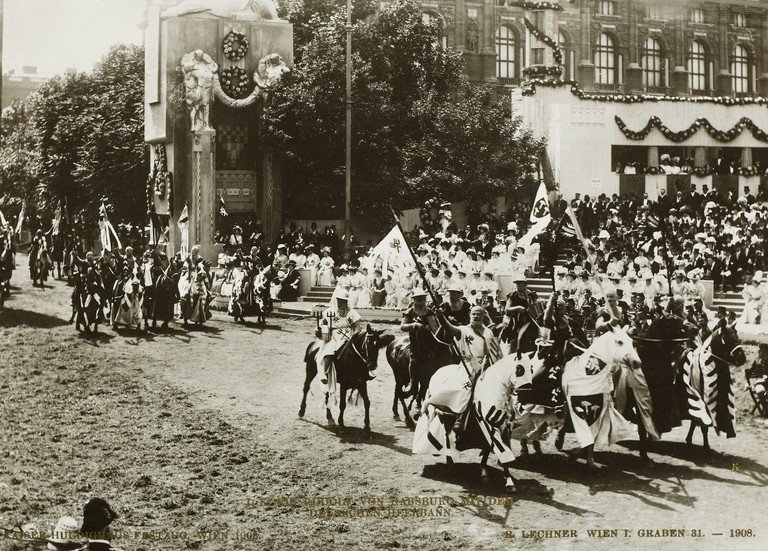The Pageant Moment
The Royal Historical event I mentioned in my last post got me thinking about the wider context of the British pageant movement. What was it about the early part of the twentieth century that caused so many people to organize, watch and perform in pageants? Pageants were not after all unique to Britain. The movement was especially strong in North America, and things similar to British historical pageants were staged in continental Europe from the later nineteenth century on. George Gilbert, a PhD student at UEA, gave a very interesting paper on the Russian autocracy’s mania for historical commemoration before 1914. This was evidenced in – among other things – the bicentenary of the Battle of Poltava (1909), the centenary of the Battle of Borodino (1912) and the tercentenary of the Romanov dynasty (1913), all of which were nationalistic festivals designed to promote a common sense of Russian identity. (They weren’t wholly successful in this respect, the commemorations acting as lightning rods for expressions of nationalistic dissent as much as consensus.) There was also something described as an historical pageant held in Austria in 1908, which was held on the jubilee of Emperor Franz Joseph’s accession to the Austro-Hungarian throne, and which involved 25,000 people as participants.

Der Kaiser-Huldigungs-Festzug 1908 - out of copyright
So from the later
nineteenth century, then, there was an upsurge in commemorative activity, in a
desire to perform the past – not just in Britain, but across the world. The
question is why? Following scholars such as Stephen Kern and Reinhardt
Kosselleck, we could see pageants – and other forms of engagement with the past
– as a response to the sense of acceleration, of life speeding up generally,
which was wrought by the experience of late modernisation, and which was
experienced throughout the industrialised/industrialising world at this time.
Pageant performances, we might argue, offered a sense of continuity, of what
sociologists would call a ‘restitutive link’ between past and present. They
were an accommodative response to modernity in a fast-changing world.
But does such an interpretation imply that pageanteers merely used the past instrumentally in response to contemporary issues? At the RHS symposium, Roland Quinault quoted Benedetto’s Croce’s famous dictum, ‘All history is contemporary history’, which seems apposite here. But I wonder… the malleability of the past can be exaggerated. I don’t think it should be seen as an infinitely large and various set of building blocks from which each generation can fashion their own different and often widely divergent constructions of history. This is not a good approach to understanding pageants, anyway. The history celebrated in pageant narratives had an independent existence, living on in the minds of contemporaries and the folk memories of communities. Sure, it was shaped and re-presented by scriptwriters and pageant masters, but it needed to have some connection to the pasts that existed in mainstream cultural discourse, and in popular consciousness, both a local and national levels. Without this, the performances would have been empty of meaning; they would not have attracted the response that they did; ‘pageantitis’ would have been a slight cold, and not a raging fever.
Paul Readman
